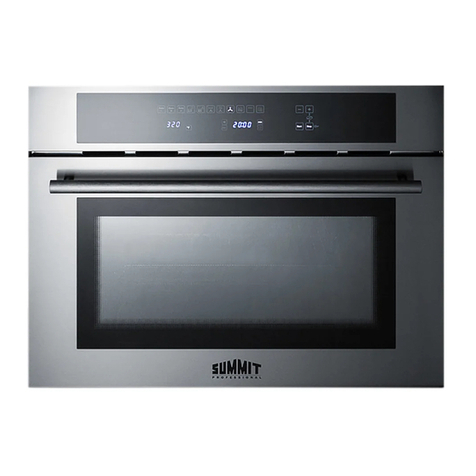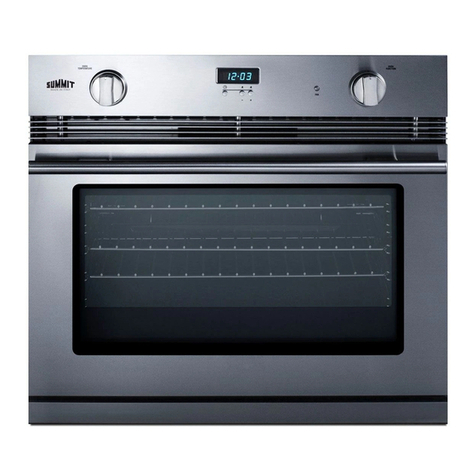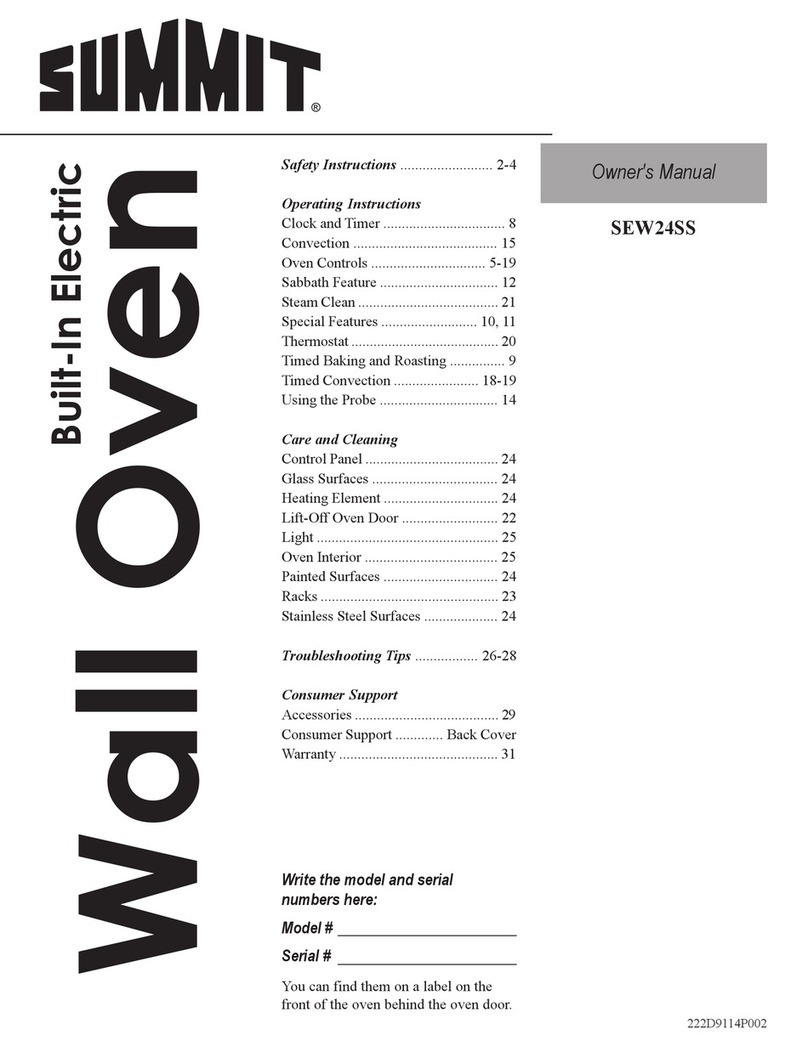10
8. Apply a non-corrosive leak detection fluid to all joints and fittings in the gas connection between
the supply line shut-off valve and the range. Include gas fittings and joints in the range if
connections were disturbed during installation. Check for leaks! Bubbles appearing around
fittings and connections will indicate a leak. If a leak appears, turn off gas supply line shut-off
valve, tighten connections, turn on the gas supply line shut off valve, and retest for leaks.
CAUTION: Never check for leaks with an open flame. When the leak check is complete, wipe off all
residue.
9. Remove shipping polystyrene from oven cooking cavity. This is to hold the burners in place on
the burner base for shipping purposes only.
Checking Pressure of House Piping System
1. The appliance, and its individual shut-off valve, must be disconnected from the gas supply piping
system during any pressure testing when the test pressure exceeds ½ lbs./sq. in. (3.5 kPa or
13.8 in. water column).
2. The appliance must be isolated from the gas supply piping system by closing its individual
manual shut-off valve during any pressure testing of the gas supply piping system when the
testing pressure is equal to or less than ½ lbs./sq. in. (3.5 kPa or 13.8 in. water column).
Gas Conversion
All ranges are equipped with both Natural Gas and LP Gas injectors as well as a convertible
appliance pressure regulator. The unit model number plate states which gas it was adjusted for at
the factory. Converting the unit to either Natural gas or LP gas will require switching burner injectors,
burner adjustment for low flame, and adjustment of the appliance pressure regulator converter cap.
Inlet pressure to the appliance pressure regulator should be as stated in the chart on page 14 for
both operation and checking of appliance pressure regulator setting.
Replacement of the injectors:
1. Unplug the oven and close the ball valve supplying the gas, using the thermostat knob.
2. To replace the injectors, remove the screw fixing the burner to the front part (for the oven burner
it is first necessary to extract the removable top “P” fig. n°13). Cautiously extract the burner “B”
from the rear seat, being careful not to shake the thermocouple and the ignition spark plug cable.
3. Using a 7 mm hexagonal wrench, loosen the injector “I” (fig. n° 13/13A) and replace it following
the indications in the table “Oven gas burners technical data” – Injector (page 16). Re-mount the
burner following the above described operations, but in reverse order, and following the
instructions for adjustment of the by-pass.
Adjustment Bypass:
1. Remove the thermostat knob.
2. Using a small flat tip screwdriver, find the by-pass screws (figures 11 and 11A).
3. Turn right until the screw is completely closed.
4. Turn the by-pass screw left by the number of degrees indicated in the Technical Data chart
“Value by-pass” (page 16).































